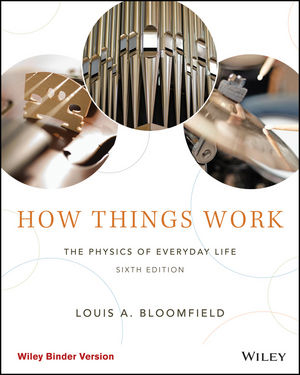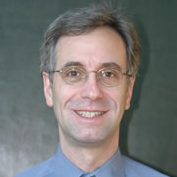
How Things Work: The Physics of Everyday Life, 6th Edition
By Louis A. Bloomfield
It is common for students to feel intimidated, or even scared, when starting a Physics course. How Things Work takes a new approach to change this mentality by relating physics to objects we interact with daily. This course provides liberal arts physics instructors and students with a customizable, mobile and media rich online resource to engage students taking the course leveraging any teaching style. The introduction of Adaptive Practice will provide students a roadmap to identifying knowledge gaps and remediating those areas. Questions and pedagogy throughout the course allows students to learn how to think logically in order to solve problems through videos, animations, and illustrations. The new WileyPLUS platform provides a learning environment that is fully assessable, optimized to work on mobile devices, and can be accessed on other Learning Management Systems.
Schedule a Demo Request Instructor AccountWant to learn more about WileyPLUS? Click Here

Adaptive Practice provides students with a personal, adaptive learning experience
Adaptive Practice helps students build their proficiency on topics and use their study time most effectively.
Over 1,000 videos enhance the learning experience
Explanation, Question, Demonstration and Check Your Understanding videos provide additional explanations of more difficult concepts. The videos also provide answers to open-ended Questions to Think About, real-life demonstrations of objects, ideas and concepts as well as context for the Check Your Understanding questions.
Animations and simulations bring static images and concepts to life
Animations based on the most difficult concepts for students to understand provide a dynamic, visual representation that improves upon the standard static images. Simulations of many of the objects found in the text include interactive questions that turn them into virtual lab experiments.

Louis A. Bloomfield is Professor of Physics at the University of Virginia. He received his Ph.D. from Stanford in 1983 and was a postdoctoral fellow at AT&T Bell Laboratories before arriving at the University of Virginia in 1985. He is the recipient of numerous awards for his research in atomic, condensed matter, and optical physics, including the Apker Award of the American Physical Society, a Presidential Young Investigator Award of the National Science Foundation, a Young Investigator Award of the Office of Naval Research, and an Alfred P. Sloan Fellowship, and he is a Fellow of the American Physical Society. In addition to his books, Bloomfield is the author of more than 100 publications in the fields of atomic clusters, autoionizing states, high-resolution laser spectroscopy, nonlinear optics, computer science, and general science literacy. Bloomfield works extensively with professional societies and the media to explain physics to the general public and has appeared frequently on television and radio. He co-hosted the television series Some Assembly Required on the Discovery Channel (2007-2008) and appeared frequently in Known Universe on the National Geographic Channel (2009).
- The Laws of Motion, Part 1
- The Laws of Motion, Part 2
- Mechanical Objects, Part 1
- Mechanical Objects, Part 2
- Fluids
- Fluids and Motion
- Heat and Phase Transitions
- Thermodynamics
- Resonance and Mechanical Waves
- Electricity
- Magnetism and Electrodynamics
- Electromagnetic Waves
- Light
- Optics and Electronics
- Modern Physics

